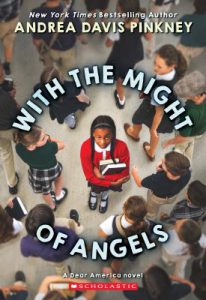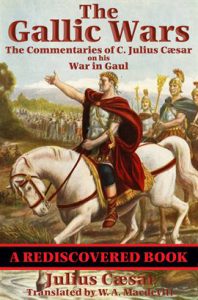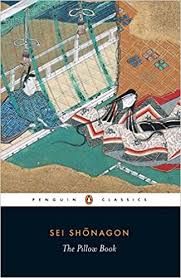The importance of diaries, memoirs, and autobiographies for our empathy and history
Posted on August 26, 2020 at 6:00 am

BY CAITLIN WHEELER
I had wanted to be a diarist as a child, but having grown up on Dear America and Royal Diaries, I felt like my 90s school bus experiences weren’t interesting enough. I have since realized that my attitude about my journal writing continued into adulthood, and yet I’ve also considered sharing with you other merits of journaling, such as meditation and contemplation, outside of the historical authenticity of a moment.
When COVID-19 arrived, suddenly, my world and experiences felt historic—and I wasn’t alone. My social media feeds filled with questions like “When did we last experience something that spanned the globe like this?”
So instead of simply discussing the benefits of meditative journaling, I’ve planned a series of posts. I’ll take a look at memoirs and the problem of memory and motivation; at the uses of autobiographical work in school for children of various ages; and at the many ways journaling can be enjoyed by adults, including those who don’t ever plan to publish.
Here I take a look at the relationship between memoir and our understanding of history, specifically, the importance of autobiographical writing to historians and how they can use them to better understand the world that came before.
Better understanding trauma through personal journals
Like me, you probably read excerpts from The Diary of Anne Frank in junior high or high school. Anne’s diary is used in classrooms across the world to offer readers not simply the facts of the Holocaust but a tangible way to connect to the people who suffered from it.
Something fascinating happens to our neural pathways when we engage with a story. Our brains strive to find connections with the storyteller. If you look at a scan of a brain while someone is reading dry statistics, the language processing areas (called the Broca area and the Wernicke area) will reliably light up. Those lights tell the scientist viewing your brain that you’ve engaged in a basic understanding of the grammar and vocabulary in front of you.
But when you listen to someone tell a story, far more areas of your brain light up—as many as six or more distinct areas. In fact, if you view the scan of a brain while telling a story and a brain listening to a story, the exact same neural pathways light up. Experiencing an event in reality and experiencing an event in a story activate the same brain functions, which may be why stories engage our empathetic impulses so much more easily than statistics do.
Readers of Anne’s diary may see themselves in her arguments with her mother, her disappointment with her love interest, Peter, and her fierce, self-critical aspirations to become a famous writer.
Knowing that 50,000 people died in the Bergen-Belsen concentration camp is devastating, but the number is large and can be hard to fully recognize. 50,000 is also the number of people that run Bloomsday every year.
When I volunteered for Bloomsday for the first time in 2015, I watched a steady stream of runners at the starting line filling the streets—different people every few seconds for hours. I watched it happen, but I still have a hard time really wrapping my head around the enormity of the number of people I saw.
Now when I hear about Bergen-Belsen concentration camp, I can’t help but think of the precocious, 15-year-old, would-be-author Anne. Her story helps me understand that each of those 50,000 prisoners had a full, complex interiority and life, like Anne did, and it places that enormous devastation in a context I can better comprehend and mourn.
Diaries from members of oppressed people may be hard to find, but they are a powerful way for historians to pull the reality of an atrocity into the light and not just simple statistical acknowledgement. “Yes, that happened, and it’s objectively sad” versus “Yes, that happened, and I will do everything in my power not to let it happen again.”
Understanding ancient peoples and the school of suspicion
One of the earliest memoirs we have available in English is Julius Caesar’s Commentaries on the Gallic War, in which Caesar recounts his experiences among the Gallic tribes during the Roman conquest of Gaul (present-day France, Belgium, Switzerland, Luxembourg, Britain, and northern Italy).
As the earliest written account we have of the Gallic people and especially of the druids who lived among them, The Gallic War is a cornerstone to our understanding not simply of the Roman rise to power but also of ancient western European culture outside Rome.
Caesar describes his experiences in simple, plainspoken, relatable Latin prose. If he had written in modern English, we might call his tone “no-nonsense”. While Caesar may not have known about neural pathways, it appears he understood the power of storytelling to plant ideas in people’s heads.
Of course, there’s a “but” here. By looking at the wider political stage of the time, most historians have concluded that Caesar did not, as he illustrated it, conquer Gaul because he was afraid of the violent Gallic tribes. Rather, they argue that conquering Gaul helped him consolidate political power in Rome.
You know what else helps consolidate power? A good story.
While Caesar does provide historians with the earliest account we have of the druids, many keen-eyed readers note that the stories Caesar tells of Gallic culture are very convenient to his cause. It’s a clever piece of propaganda. Presented as a Roman general’s daily observations, The Gallic Wars slowly builds a picture of the Gauls as a people too barbaric to be left alone but civilized enough to be safely assimilated into Roman society.
Whether the stories Caesar told were cherry-picked and copied from other Roman writers with their own agendas, or wholly made up, The Gallic War chooses its illustrations to uphold a worldview Caesar wanted his Roman citizens to share. For many Romans at home, it might be the only first-hand account of the Gallic tribes they had access to, and it probably shaped how they welcomed them into their empire.
Given that The Gallic Wars is the earliest account we have of the Gauls today – modern readers can relate.
Imagine if everything we knew about Alexander Hamilton came from a self-published memoir written by his rival Aaron Burr during the height of their disagreements. How would historians choose what to believe, what to share, and in what context? And what would readers take away from that historical telling?
This is the dilemma historians face when reading texts like The Gallic War that have very few, if any, counterparts to share other points of view.
One strategy some historians use is a philosophical approach called “The Hermeneutics of Suspicion,” which aims to seek out and decode underlying intents.
In our context, the hermeneutics of suspicion might advise that readers consider what stories the writer stands to benefit from. If the writer tells a story that benefits him, it may be subject to suspicion. What aspects most benefit him? These are the aspects which the historian might treat with the most skepticism.
On the other hand, if the writer tells a story that makes him look bad, or that undermines his power—that story almost certainly contains some real representation of the facts. Otherwise, why would he tell it?
Diary and daily life
While every written work is influenced by the worldview of the writer, not all autobiographical works are as likely to be skewed as Caesar’s was.
Samuel Pepys (delightfully pronounced “peeps”) was a British member of Parliament who lived during the English Restoration, who intended his diaries to remain private until after his death.
The Diary of Samuel Pepys offers a detailed account of bubonic plague outbreaks, an international trade war, a city-wide fire, and the political schemes that followed the death of Lord Protector Oliver Cromwell.
But Pepys’s work is full of more everyday sentiments too, including his determination to hold to his new year’s resolutions, jealousy over his wife’s dancing teacher, delight at a favorite play, and even frustration with his cat waking him in the middle of the night. Spanning ten years, the diaries contain over a million words, peppered with French, Spanish, Italian, and shorthand—especially when detailing more illicit experiences.
Still, Pepys carefully bound the diaries and left them in his library where they could easily be found by future generations. Today, students of English history or literature are likely to read his personal accounts. Indeed, his work is so important to our understanding of English history that if you walk the streets of London, you can find lines from his diary inscribed on public walkways.
The private intention of these diaries gives us some assurance: while it’s still possible for Pepys to be less than forthright with himself, we can be fairly confident he isn’t doing so on purpose, and that he is therefore accurately representing his world as he experienced it. Even if he hoped future generations might read his work, the idea of an ulterior agenda is at least somewhat removed by the fact that he didn’t intend anyone to read it until after he was dead.
There are other diarists like Pepys. In Japan, students study The Pillow Book, a collection of personal anecdotes and poems written by Sei Shōnagon, a court lady in Heian Japan around the turn of the first millennium. Her poetry and private contemplations offer an essential window into lower court life under the reign of Emperor Ichijō.
These diaries are perhaps the closest thing we have to an empathetic glimpse into what it was like to live as a member of middle class in 17th-century London, or of the nobility in 11th-century Kyoto. And they offer us a chance at feeling like members of these past societies.
If you’re looking to read more autobiographical content, you can take a look at the booklist from my June article, in which I share some of my favorite recent memoirs by LGBTQ authors.
Museums and schools have started asking people to collect memories and ephemera for future displays (more on that).Consider sharing your memories and ephemera of the present era that you hope to someday see in a museum display!

Tags: autobiography, diary, empathy, historians, history, journaling, memoir, reading, self, understanding, writing





